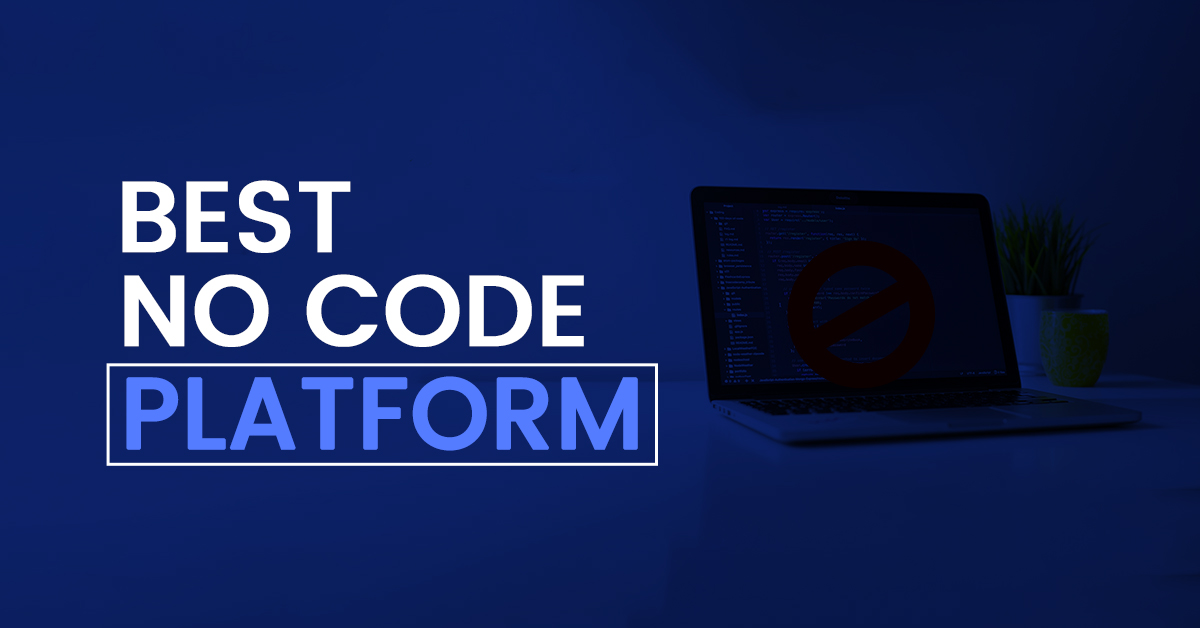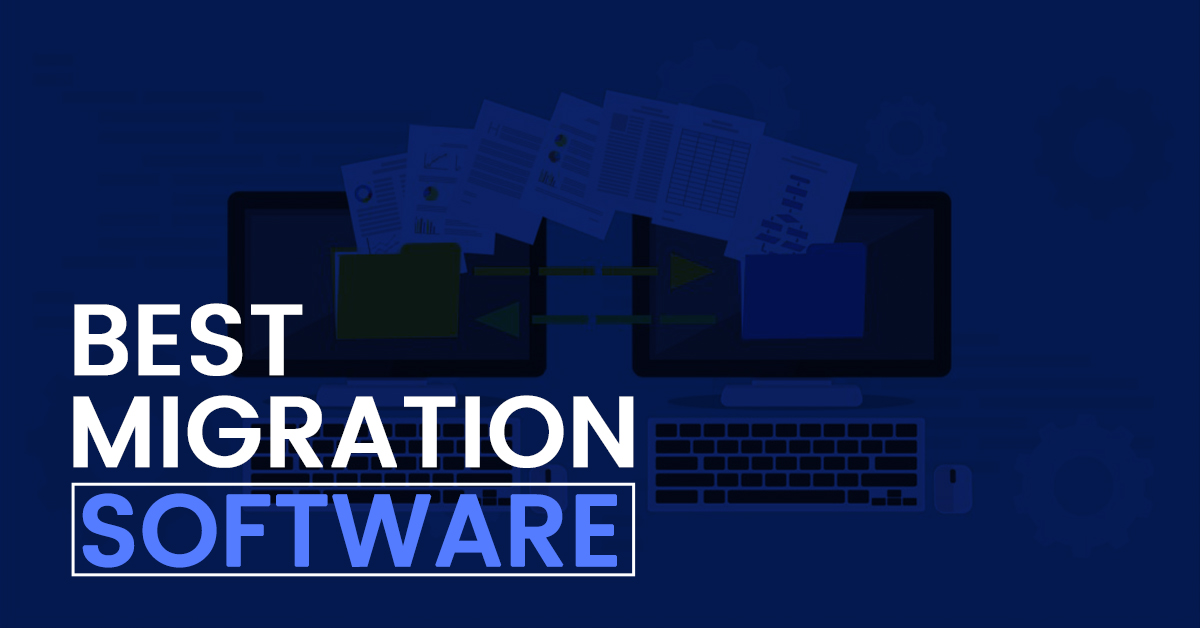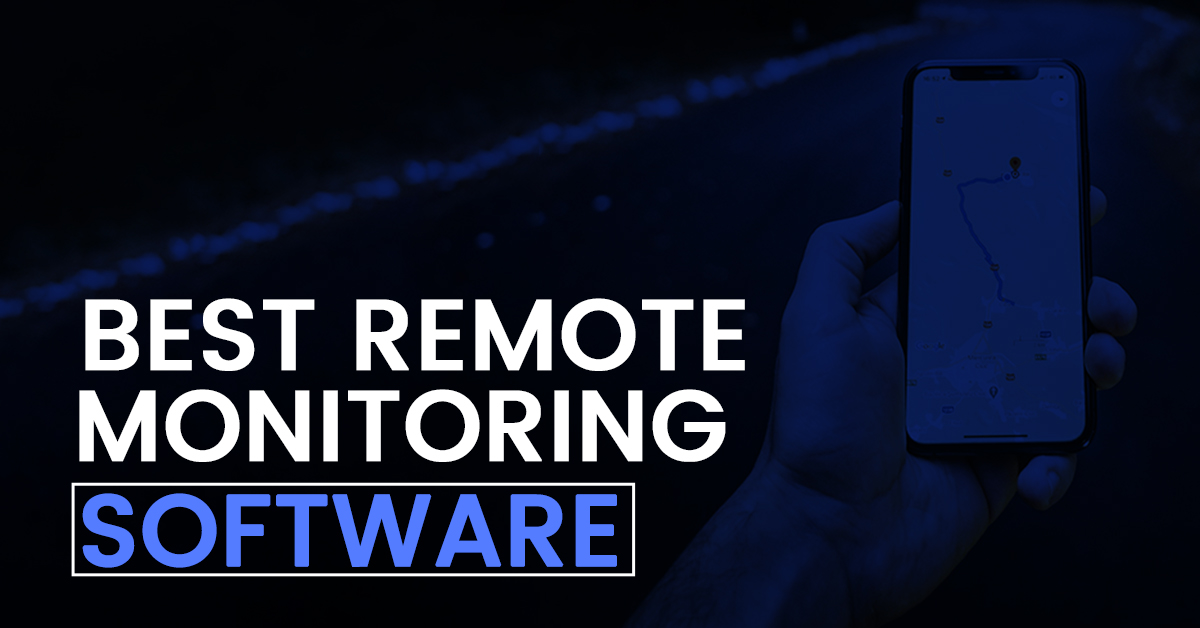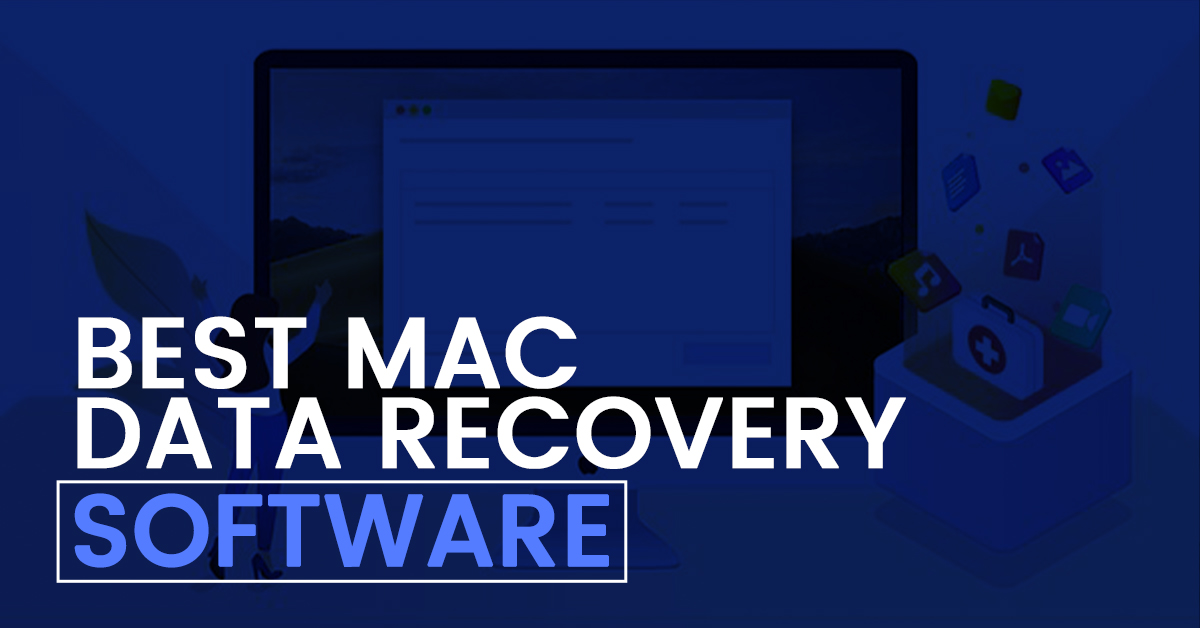
7 Best No-Code/Low-Code Platforms to Build Your Website
Do you want to build a website quickly and easily without writing code? If so, then this article is exactly what you need. The good
Home » IT & Development

Do you want to build a website quickly and easily without writing code? If so, then this article is exactly what you need. The good
Making a website used to be a difficult process that required coding knowledge and design expertise. But nowadays, there are website makers that make the

Backing up your data is one of the most important things you can do to protect yourself from a data loss disaster. Whether your computer

WordPress hosts about 65.2% of all websites using a Content Management System on the internet. So, chances are you already use a WordPress site or

Businesses rely on remote monitoring software to keep track of their operations when employees are not in the office. It can be tough to keep

What is Mac Data Recovery Software? Mac Data Recovery software is a type of program that can be used to recover lost or deleted files

As the world becomes more and more digitized, our reliance on technology to manage our lives only increases. From tracking our fitness goals to managing

Creating a website used to be a difficult task that required a lot of coding knowledge. Thankfully, those days are behind us. These days, many

As work gets more complex, innovation in the software development industry continues to improve based on demand. Depending on the business’s specific needs, a company
IT and Development Software refers to a wide range of tools used by professionals in the field of Information Technology and software development. These software solutions serve various purposes, aiding in tasks such as coding, testing, project management, and deployment.
One of the primary categories of IT and Development Software includes Integrated Development Environments (IDEs) or code editors. These tools provide an environment for programmers to write, edit, and debug code efficiently. They often come equipped with features like syntax highlighting, code completion, and debugging tools to streamline the coding process.
Version Control Systems (VCS) are another essential type of software used in IT and development. They allow teams to collaborate on code, track changes, and manage different versions of a project. Git is one of the widely used VCS platforms.
Testing and Debugging Software are crucial for ensuring the quality and functionality of developed software. These tools help in identifying and fixing errors and bugs in the code before deployment. They include testing frameworks, debuggers, and performance analysis tools.
Project Management Software is used to plan, organize, and track progress on development projects. These tools assist in task allocation, scheduling, and collaboration among team members. They often include features for issue tracking, documentation, and communication.
Additionally, Software Deployment Tools are utilized to automate the process of deploying software applications. They streamline the movement of code from development to testing and then to production environments, ensuring a smooth and efficient deployment process.
Overall, IT and Development Software encompass a broad spectrum of tools and solutions that support various stages of the software development lifecycle. They play a critical role in enabling developers and IT professionals to work efficiently, collaborate effectively, and deliver high-quality software products and solutions.
IDEs provide comprehensive environments for software development, incorporating tools like code editors, debuggers, compilers, and build automation. Examples include Visual Studio, IntelliJ IDEA, and Eclipse.
These systems manage changes to source code over time, facilitating collaboration among developers. Git, Subversion (SVN), and Mercurial are popular examples that track code changes and enable team collaboration.
Tools for planning, organizing, and tracking software development projects. They include Trello, Jira, Asana, and Microsoft Project, aiding in task allocation, scheduling, and progress tracking.
These tools help ensure software quality through testing and debugging. Examples include Selenium for automated testing, JUnit for Java, and TestRail for test case management.
CI/CD tools automate the building, testing, and deployment of software. Jenkins, GitLab CI/CD, and Travis CI are widely used to streamline the development pipeline.
Containerization tools like Docker and container orchestration tools like Kubernetes provide efficient packaging, deployment, and management of applications across diverse environments.
DBMS software manages data by providing functionalities to create, retrieve, update, and delete data in databases. Examples include MySQL, PostgreSQL, MongoDB, and Oracle.
Frameworks like React, Angular, Vue.js, and tools like Bootstrap, Sass, and Webpack assist in building web applications, providing libraries, components, and development aids.
This category includes firewall software, antivirus programs, network monitoring tools (e.g., Wireshark), and intrusion detection/prevention systems (IDS/IPS) to secure networks and data.
DevOps tools like Ansible, Puppet, and Chef automate configuration management, infrastructure provisioning, and deployment processes, enhancing collaboration between development and operations teams.
Services offered by providers like Amazon Web Services (AWS), Microsoft Azure, and Google Cloud Platform (GCP) offer scalable computing power, storage, and services for building and deploying applications.
IT and development software streamline workflows, automating repetitive tasks, reducing manual efforts, and accelerating the development process. This efficiency allows teams to focus on innovation and high-value tasks.
These tools facilitate seamless collaboration among team members, whether they’re in the same office or spread across different locations. Shared repositories, version control systems, and communication platforms foster teamwork and idea sharing.
Development software includes tools for testing and quality assurance, ensuring that products meet high standards. Automated testing, code analysis, and debugging functionalities contribute to robust and reliable software.
Integrated project management tools assist in planning, organizing, and tracking progress. They offer features like task assignment, milestone tracking, and resource allocation, ensuring projects stay on schedule and within budget.
IT and development software often come equipped with security features to protect sensitive data and ensure compliance with industry regulations. Encryption, access controls, and vulnerability assessments enhance overall system security.
These tools are designed to accommodate scalability and flexibility, allowing developers to adapt to changing project requirements and scale resources up or down as needed.
By automating processes, improving efficiency, and minimizing errors, IT and development software contribute to cost savings and faster time-to-market for products and services.
Development software fosters an environment conducive to innovation and experimentation. Prototyping, sandbox environments, and new technology integration enable developers to explore new ideas without disrupting existing systems.
Many development tools come with a vast community of users and extensive support networks. This community-driven ecosystem provides access to resources, forums, and knowledge-sharing, aiding in problem-solving and skill enhancement.
Leveraging advanced IT and development tools can give businesses a competitive edge. By staying up-to-date with the latest technologies and methodologies, companies can deliver better products and services ahead of their competitors.
The more features and advanced functionalities a software offers, the higher its cost might be. Additional modules, customization options, and advanced capabilities often increase the price.
Ongoing support, updates, and maintenance services may be included in the software cost or provided as an additional subscription or service fee.
Costs associated with implementing the software, including customization, data migration, training, and integration with existing systems, can significantly impact the total expenditure.
Different vendors might price their solutions differently based on their market positioning, reputation, and additional services bundled with the software.
Open-source software might have lower upfront costs as it’s often free, but there might be expenses related to support, customization, and integration.
These individuals are at the forefront, utilizing development software to create applications, design systems, write code, and build software solutions across various platforms and programming languages.
In-house IT teams in companies of all sizes rely on development software for tasks like network management, system administration, database management, and cybersecurity. These tools help maintain, troubleshoot, and secure the organization’s digital infrastructure.
Professionals in web development and design use specialized software for creating websites, user interfaces, and digital experiences. Tools for coding, graphic design, and content management are essential in their work.
Specialized software assists developers in creating mobile applications for various operating systems like iOS and Android. These tools include integrated development environments (IDEs) and app-building platforms tailored for mobile development.
In data-driven fields, professionals rely on software for data analysis, visualization, and modeling. Tools like statistical software, machine learning platforms, and data processing frameworks help derive insights from complex datasets.
Teams responsible for ensuring software quality use testing and QA software. These tools help in automating tests, identifying bugs, and ensuring the functionality, performance, and security of software products.
Project management software assists in organizing, planning, and tracking the progress of development projects. It enables collaboration, task assignment, and timeline management within development teams.
Entrepreneurs and startups leverage development software to build and launch innovative products or services. These tools enable rapid prototyping, MVP (Minimum Viable Product) development, and scaling of digital solutions.
In academic settings, development software is used to teach programming languages, software development methodologies, and other IT-related skills. Educational institutions rely on these tools to equip students with practical knowledge.
Visual Studio Code (VS Code) is a highly customizable source-code editor developed by Microsoft. It supports numerous programming languages and extensions, making it a favorite among developers for its flexibility and ease of use.
GitHub is a web-based platform for version control using Git. It’s a collaborative space for developers, facilitating code sharing, issue tracking, and team collaboration through features like pull requests and branching.
Jira, developed by Atlassian, is a powerful project management tool widely used in agile software development. It helps teams plan, track, and manage their work efficiently through customizable workflows and extensive integrations.
Docker is a containerization platform that allows developers to package, distribute, and run applications in containers. It streamlines the development and deployment process by ensuring consistency across different environments.
Postman is a popular API development environment used for building, testing, and documenting APIs. It simplifies API workflows, allowing developers to create and share API collections effortlessly.
Slack is a communication and collaboration platform that enhances team interaction. It offers channels, direct messaging, file sharing, and integration with various tools, making it a hub for team discussions and updates.
AWS provides a vast array of cloud services for computing, storage, databases, machine learning, and more. It’s widely adopted by developers and businesses due to its scalability, reliability, and extensive service offerings.
GitLab is a web-based Git repository manager that provides a complete DevOps platform. It includes features for CI/CD pipelines, issue tracking, version control, and container registry, all in a single application.
IntelliJ IDEA is a robust integrated development environment (IDE) primarily used for Java development. It offers advanced coding assistance, productivity-boosting features, and support for various JVM languages.
Ansible is an open-source automation platform used for configuration management, application deployment, and orchestration. It simplifies IT infrastructure management by automating repetitive tasks.
| Feature | Description |
| Version Control | Allows tracking changes in code, enabling collaboration among developers by managing different versions of software. |
| Integrated Debugger | Helps identify and fix errors in the code by providing step-by-step execution and inspection of variables. |
| Code Collaboration | Facilitates simultaneous editing and sharing of code among team members, promoting efficient teamwork. |
| Automated Testing | Enables the creation and execution of automated tests to ensure code quality, reliability, and performance. |
| Integrated Development Environment (IDE) | Offers a comprehensive platform with tools for coding, debugging, and project management in one interface. |
| Continuous Integration/Continuous Deployment (CI/CD) | Automates the build, testing, and deployment processes, ensuring rapid and consistent software delivery. |
| Code Review | Allows peers to review code changes, providing feedback and ensuring code quality before merging into the main branch. |
| Project Management | Provides tools for planning, scheduling, and tracking tasks, enabling efficient project management within the software. |
| Dependency Management | Manages external libraries and dependencies, ensuring proper integration and updating within the software project. |
| Performance Analysis | Offers tools to analyze code performance, identify bottlenecks, and optimize the software for better efficiency. |
| Software | Integration | Description |
| Jira | Bitbucket | Allows linking of commits, branches, and pull requests in Bitbucket with the relevant issues in Jira for tracking |
| GitHub | Slack | Sends notifications to Slack channels for repository activities like pushes, pull requests, and issues |
| Jenkins | Docker | Integrates with Docker for continuous integration and deployment of applications in containers |
| GitLab | Kubernetes | Facilitates the deployment and management of applications using Kubernetes orchestration within GitLab CI/CD |
| AWS | Terraform | Automates provisioning and management of AWS resources through Infrastructure as Code (IaC) with Terraform |
| Azure DevOps | Microsoft Teams | Sends notifications and integrates project updates directly into Microsoft Teams channels |
| Docker | Ansible | Ansible can configure Docker instances and containers, managing their setup and deployment |
| Kubernetes | Prometheus | Collects metrics and monitors Kubernetes clusters, providing insights into cluster performance |
| Salesforce | Zapier | Automates workflows between Salesforce and other applications by creating triggers and actions |
| Slack | Google Drive | Enables file sharing and collaboration by linking Slack channels to relevant Google Drive folders |
Software vulnerabilities can lead to security breaches, data leaks, or cyber attacks. As technology evolves, so do the tactics of cyber threats. Ensuring robust security measures and timely updates is crucial to safeguard sensitive information.
Integrating new software with existing systems or ensuring compatibility across different platforms can be complex. Compatibility issues may hinder the smooth functioning of software, leading to inefficiencies or data inconsistencies.
Even with rigorous testing, software bugs and glitches can occur. These issues may cause disruptions, impact user experience, and require immediate attention to prevent significant system malfunctions.
As businesses grow, their software needs to scale accordingly. Ensuring that software can handle increased data volumes, user loads, and expanded functionalities without compromising performance can be a challenge.
Introducing new software might face resistance from users who are accustomed to older systems. Adequate training and user-friendly interfaces are essential for smooth adoption and to maximize the software’s potential.
Regular maintenance, updates, and patches are necessary to keep software functioning optimally. Neglecting these can result in performance issues, security vulnerabilities, or software becoming obsolete.
Budget constraints might limit the acquisition of high-quality software or impede necessary updates. Balancing the costs of software development, licensing, maintenance, and upgrades is a constant challenge.
Meeting project deadlines and managing development cycles within the projected timeline can be challenging. Unexpected issues or changes in requirements may impact delivery schedules.
The rise of low-code and no-code platforms allows developers and non-technical users to build applications with minimal coding knowledge. These platforms accelerate development and empower citizen developers to create software solutions rapidly.
DevOps and Agile methodologies continue to dominate software development. Tools supporting continuous integration/continuous deployment (CI/CD), automation, and collaboration among development, operations, and QA teams are in high demand.
Integration of AI and machine learning capabilities into software development tools is becoming more prevalent. These technologies enhance software functionalities, offering predictive analytics, natural language processing, and automation of repetitive tasks.
Cloud-native development focuses on building applications specifically for cloud environments. Serverless computing, in particular, is gaining momentum, allowing developers to deploy code without managing underlying infrastructure, leading to more efficient resource utilization.
With the increase in cyber threats, there’s a growing emphasis on cybersecurity tools and practices. Security-focused development tools, such as static application security testing (SAST) and dynamic application security testing (DAST), help identify vulnerabilities early in the development cycle.
An API-first approach is gaining traction, emphasizing the design and development of APIs before building other parts of the application. This facilitates flexibility, scalability, and interoperability between different systems and applications.
Containerization technologies like Docker and Kubernetes are widely adopted for their ability to package applications and services into portable, scalable units. Orchestration tools manage and automate the deployment, scaling, and operation of containerized applications.
PWAs combine the best of web and mobile applications, offering a seamless user experience across devices. They utilize modern web capabilities to deliver app-like experiences without requiring installation.
The shift to remote work has spurred the demand for collaboration tools facilitating virtual teamwork. Platforms offering real-time communication, file sharing, and project management functionalities are in high demand.
While still in its early stages, the exploration of quantum computing is gaining attention in the IT and development landscape. Developers are exploring its potential to solve complex problems and drive innovation in various industries.
IDEs are comprehensive software platforms that provide developers with a suite of tools for writing, testing, and debugging code. They often include code editors, compilers, debuggers, and build automation tools.
Version control systems like Git or Subversion track changes to code, enabling collaboration among developers and ensuring the management of different versions of software projects.
Project management software assists in planning, organizing, and tracking the progress of software development projects. These tools facilitate task allocation, scheduling, and collaboration among team members.
DevOps tools automate and optimize the software development lifecycle, integrating development and operations processes. CI/CD tools automate testing and deployment, ensuring faster and more efficient code delivery.
Bug tracking systems help identify, prioritize, and resolve issues within software projects. They provide a centralized platform for reporting bugs, tracking resolutions, and managing development workflows.
Testing tools assist in automated and manual testing of software to ensure its functionality, reliability, and performance. They include unit testing frameworks, load testing tools, and code analysis software.
Containerization tools like Docker and orchestration platforms like Kubernetes facilitate the deployment and management of software applications in isolated and scalable environments.
Cloud services offer infrastructure, storage, and computing resources on-demand, enabling scalable and flexible development environments. Providers like AWS, Azure, and Google Cloud offer various services for software development.
Security software ensures the protection of software applications and systems from cyber threats. Identity management solutions help manage user access and authentication within development environments.
Documentation software assists in creating and managing technical documentation for software projects. Collaboration tools enable team communication, file sharing, and real-time collaboration among developers.